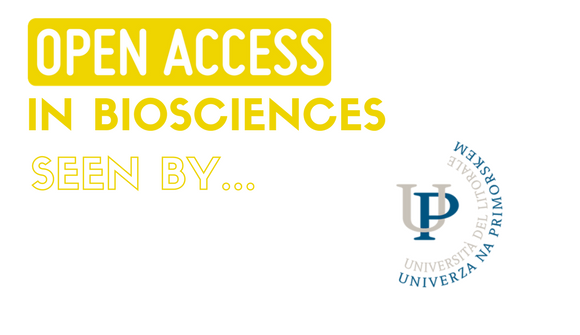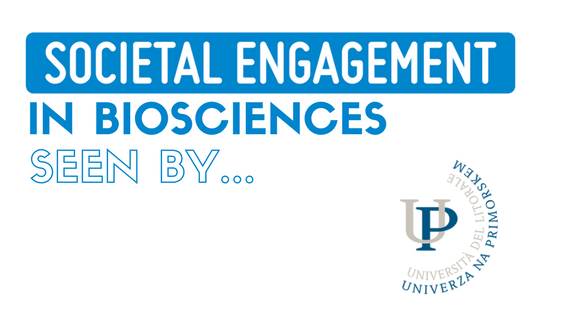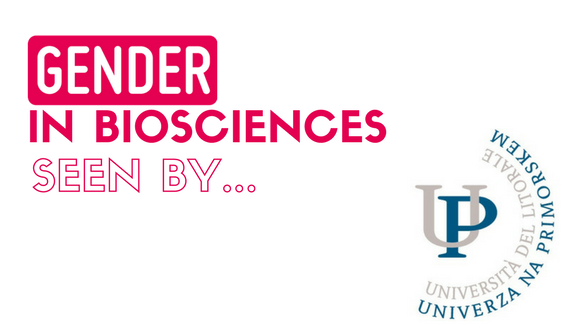How do you understand Open Access in biosciences research? The open access publications enable the new forms of scientific communication, networking and transfer of knowledge. In the so-called “Open Science” movement, teachers and researchers share their research results and information in real time with each other and with the public. With open access, this information can also be used by those persons and institutions that have not previously access to research results and could not finance such access. Scientists and academics are not the only groups that can benefit from open access publications. The demand from the business sector and individual citizens for access to research results in the form of data in publications is also important. What are the current standards and actions to achieve better Open Access in your University and in your country? The departments of biosciences (Biodiversity, Biopsychology and Applied sciences), at the University of Primorska, aim to raise awareness for accessing and sharing research results and publications. Introduction of Open Access policy is relatively new for our University and also to the other research institutions in Slovenia. A brief overview of Open Access situation is presented on the Open Science website. The Government of the Republic of Slovenia adopted the National Strategy of Open Access to Scientific Publications and Research Data in Slovenia 2015-2020 in September 2015 (ROARMAP record) and the action plan in May 2017. What are you aiming for with the implementation of the STARBIOS2 actions towards better Open Access standards for your …
Societal Engagement in Biosciences, seen by the University of Primorska, Slovenia
University of Primorska, Department of Biodiversity Sandra Hasić – research assistant at the Department of Biodiversity of the University of Primorska. How do you understand Societal Engagement in biosciences research? Societal engagement for us is not just the involvement of the department’s work in the local environment, but it is one of the most important factors for the long-term influence of our research. Nature conservation can be successful only in collaboration with different stakeholders involved in the processes, such as the local population, representatives of the authorities, NGOs, national institutions, the economy, and policy makers. Therefore, raising awareness regarding biosciences research is an important part of the process. Only with the transfer of knowledge and technologies, as a structural change in field of nature conservation, goal can be achieved. What are the current standards and actions to achieve better Societal Engagement in your University and in your country? University of Primorska is a very young University and we are still establishing our position at the local environment, and public engagement is one of the crucial points of gaining recognition in the area. The societal engagement should be focused on future collaborations with different stakeholders in the region and on promotion and integration of biosciences departments. At the national level, we can achieve progress in societal engagement with the establishment of specially designed project scheme for funding the collaborative projects between the University and local stakeholders, the economy and NGOs. Our faculty is very successful in applying for grants in schemes. …
Gender in Biosciences, seen by the University of Primorska, Slovenia
Dr. Elena Buzan – is Head of department for Biodiversity and coordinator of study programme Biodiversity and Nature Conservation at Faculty of Mathematics, Natural Sciences and Information Technologie at University of Primorska. She is also responsible for the societal engagement of UP, for the technology transfer and regulation of policy regarding intellectual property, for promoting gender equality, and for the importance of Open access and ethic knowledge in the bioresearch. 1. How do you understand “Gender” in biosciences research? I think gender issue is one of the crucial point to solve in Biosciences. Our role as researchers is to limit gender biased messaging. Women should not feel discouraged from pursuing a career in the Biosciences simply because they don’t fit a pre-determined model. A better integration of women after they finished their PhD can only improve science, as with more diversity comes more creative ideas and effective solutions. We need to stop enforcing stereotypical roles and give better support to women with families (especially small children) to continue their scientific carrier. 2. What are the current standards and actions to achieve better Gender equality in Primorska University and in Slovenia in general? Gender equality in Slovenia is slightly above the EU average, according to the EU Gender Equality Index. In spite of progress over time, there are still challenges ahead. Indicators measuring labour activity showed better results for men than for women. Women are poorly represented in the decision-making positions in employee and employer organizations. Slovenia has a fairly generous framework governing women’s sexual …






